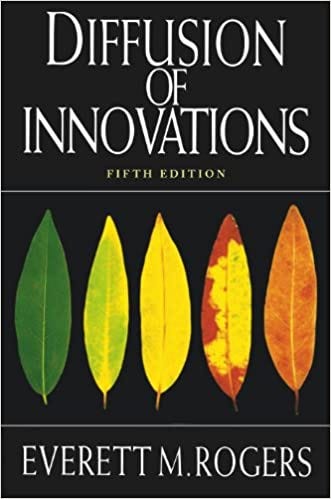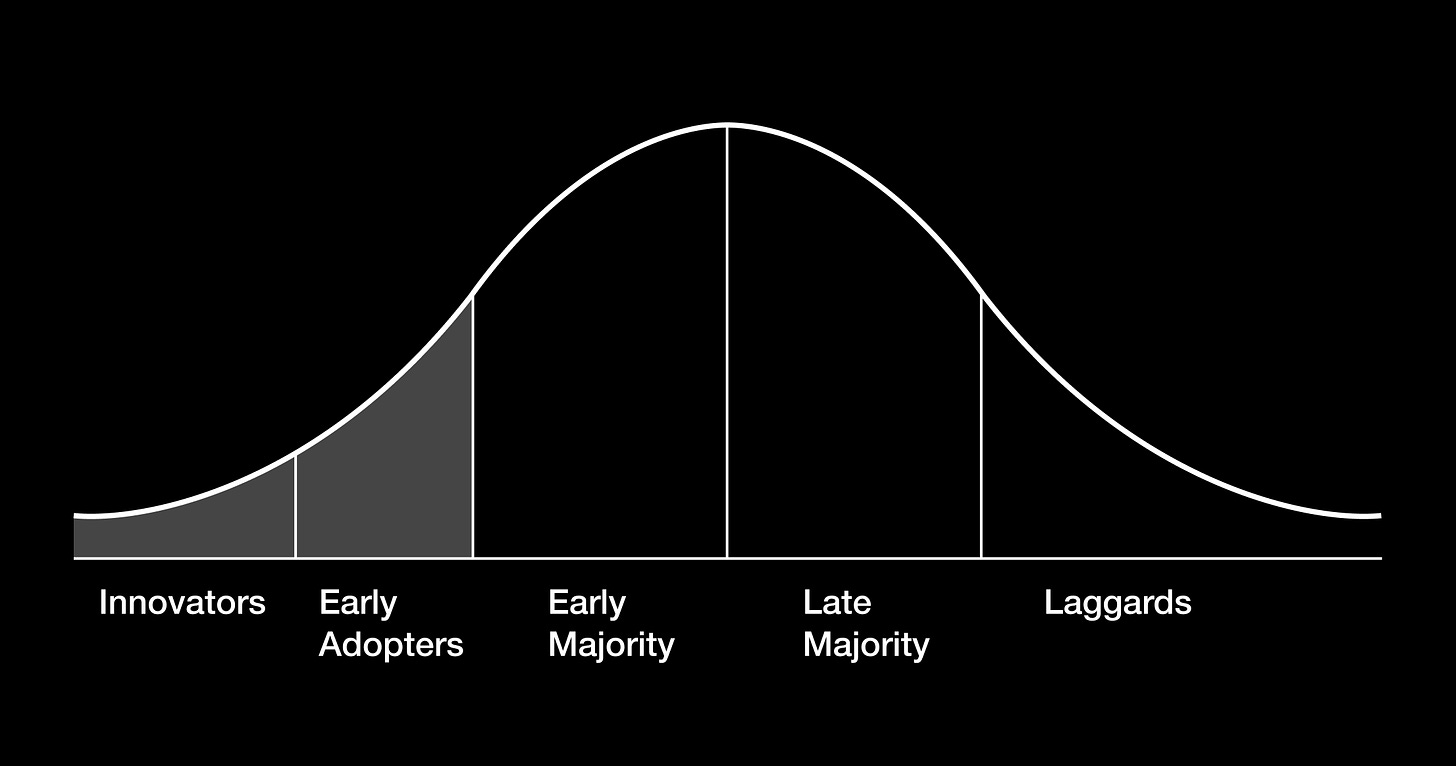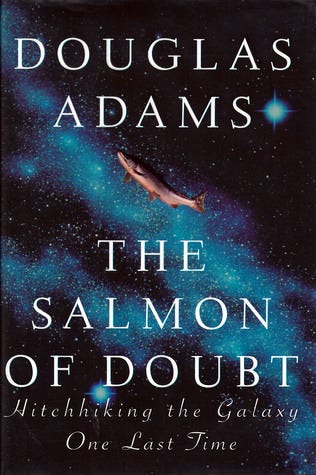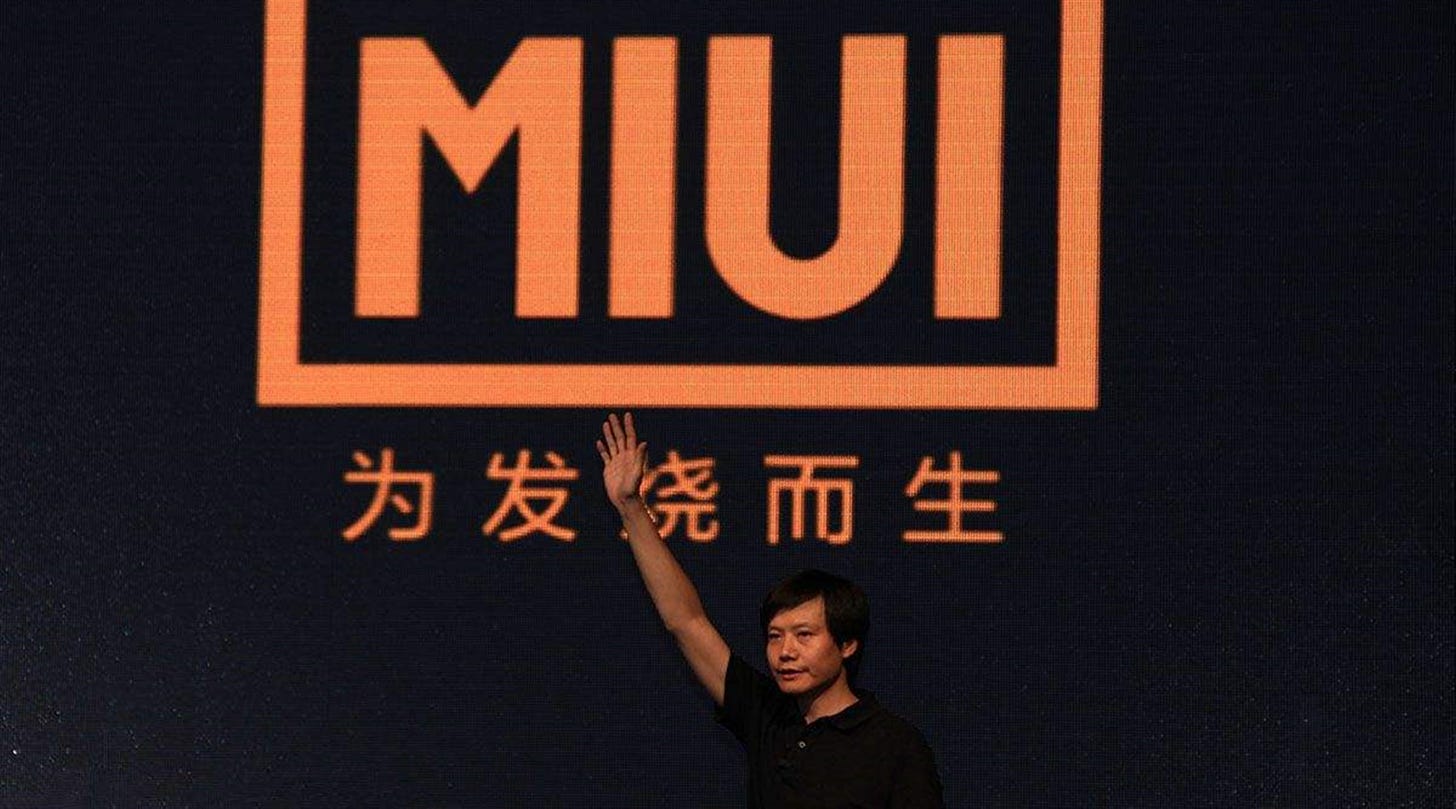#014 - PM Lessons by Meituan Co-Founder - Pt 12: Strategy for Product: PMF, Diffusion of Innovations
7min read - Sharp enough entry point, rough-and-ready product, then go from there
👋 Hi! I’m Tao. As I learn about building products & startups, I collected some of the best content on these topics shared by successful Chinese entrepreneurs. I translate and share them in this newsletter. If you like more of this, please subscribe and help spread the word!
Let’s get you up to speed:
Wang Huiwen is the co-founder of Meituan, who recently retired at age 42 with an estimated net worth of >US$2B. He opened a Product Management course at Tsinghua University in September 2020. This article and others in this PM series are my translation and edits based on a compilation of the content of his course shared online. You can see other articles in this series here.
Strategy for Product
For this section, we'll talk about four concepts:
Product-Market Fit (PMF)
Diffusion of Innovations
Segmenting, Targeting, Positioning (STP)
Price, Product, Place, Promotion (4Ps)
It's important not to separate these four concepts, and try to understand them holistically. As you'll see at the end of this section, these four concepts are mutually influencing and mutually corroborating. In the most elegant case, a product or a business will conform to the theories of these four concepts at the same time.
I. Product-Market Fit (PMF)
Product-Market Fit is coined by Andy Rachleff of Benchmark Capital and popularized by Marc Andreessen. There are two interpretations: 1. product fits a market 2. market fits a product.
My personal opinion is that the latter is more correct. If you're looking for a market for your product, you probably have gotten it backward. But of course, there are successful cases with that approach as well.
The key point is, no matter how big of a market you're targetting, you should always find a sharp enough entry point. The sharper you are, the better the initial ROI and the higher chance of success.
Beware that here we're looking for the entry point, not the eventual target market. The success and failure of many early-stage startups depend on whether they've found PMF. Many startups started investing heavily before they've found PMF, so they ran out of capital or confidence very quickly. The other mistake is that you didn't invest enough when you have found PMF. But an even more likely scenario is that the team lost their confidence while seeking PMF.
Seeking PMF is a tremendously difficult task. The concepts that we'll introduce later - diffusion of innovations, STP, 4Ps are to help you find this PMF.
STP and 4Ps come from the book Marketing Management. The book uses STP, 4Ps to discuss how to operate in the eventual target market and business model design. Here, we use these two concepts to talk about how to find the entry point to get to PMF.
(Note: PMF is a widely covered topic so Wang Huiwen assumed that everyone should know this and didn’t explain it from the ground up. For the benefit of those less familiar with PMF, I recommend these resources that helped me understand PMF:
The only thing that matters - Marc Andreessen
LP Show Preview: Product-Market Fit - Acquired Podcast
How Superhuman Built an Engine to Find Product/Market Fit - Rahul Vohra
The Never Ending Road To Product Market Fit - Brian Balfour
Fundamentals of Product-Market Fit - Andy Sparks/Holloway
)
II. Diffusion of Innovations
As a new product gradually gains popularity, people adopt it at a different rate. In the book Diffusion of Innovations, the adopters are categorized into 5 groups: Innovators, Early Adopters, Early Majority, Late Majority, and Laggards.
Rarely does a product get accepted by different groups of people at the same rate. iPhone didn't reach the mainstream until the 4th generation. For most products, it's unlikely they'd be perfect from the get-go. That means there need to be some users who will be willing to try even when the product is extremely rough. So you have to match with the needs of these users, using the STP framework to select the highest ROI market and product spec.
During the product design and market promotion process, if you can distinguish the different phases of diffusion and tailor your product design to the matching phase, you can greatly improve your ROI. Then as your capital, organizational capabilities, and R&D capabilities develop, you can expand to new groups of people and offer a better product.
In Diffusion of Innovations, Innovators and Early Adopters are the first two stages. Most early products aren't that great because the teams lack resources. The earliest group of users are very niche and the defining attribute of the early product should be "rough-and-ready". The premise for this "rough-and-readiness" is why now - why, at this point in time, this need has surfaced. It's because we've found an entry point. Whether we've developed other features is inconsequential.
As we move to Early Adopters, a key change has occurred. Now the ease of use of the product becomes important. The product for Innovators may not be very usable. A key contribution from Apple during the development of the PC industry is the Graphic User Interface (GUI). The GUI massively lowered the barriers to use the PC.
The change in usability is key as we go from Innovator to Early Adopter to Early Majority. As such, it's important for us to identify what makes using this product feasible. Only if we can identify the key change that changes the feasibility of a product, then apply force at this critical point and invest enough resources to maximize its benefit, can we make an awesome product.
Meituan Example
To illustrate, Meituan Delivery first started with students on campus, then white-collar workers. Now we also deliver medicine and fruits. In the future, our goal is to be able to deliver anything within a 3km radius. Deliver anything to your doorstep is not something we can do from Day 1. If we started as a product for everyone, we'd have never made it.
In the early days, our internal operating system for delivery was pretty bad. We didn't have many R&D resources. So how it worked was, during an order, the customer service rep would write down the customer's information, then call the restaurant directly to place the order. There wasn't online payment, so everything was cash-on-delivery. The delivery wasn't fulfilled by the Meituan platform either.
This was a rough product, and the user experience wasn't great. The early users must be Innovators. The entry point for Ele.me was the college campus. That's what we started with as well. At that time, the delivery market for white-collar workers was served by Daojia.com.
Why didn't we serve the white-collar market first?
Well, the white-collar workers have a high demand for timeliness - they probably have 30-45 mins to eat, and then they have to go back to the meetings. As for the campus market, most of the customers are playing video games anyway, so they don't have much demand for timeliness.
Always Start with Innovators & Early Adopters
Different people have different acceptance of innovation. The Diffusion of Innovations theory is very important for entrepreneurs to understand.
If you're building a new product or a new company, you must be innovating. You must find Early Adopters first. How you find the Early Adopters is through the correct segmentation.
No matter how big the market, how universal the product, you should always have some Innovators or Early Adopters at the beginning. Otherwise, you will fail because you will be unable to control product development, resources, or manpower.
How do we find Innovators or Early Adopters?
The best situation is that you are the Innovator yourself or you often hang out with them.
The typical example is Steve Wozniak and Steve Jobs. They were hanging out in the early computer hobbyist group, Homebrew Computer Club, all the time. Jobs was the best salesman, and Woz was the best builder.
How to make sure that there is a business opportunity in this "hobby" at that time?
If you are not in the circle of Innovators or Early Adopters, the difficulty of this matter rises significantly.
For example, when Meituan was trying to develop our B2B F&B management software products, no one in the company has ever opened a restaurant. Those who have opened a restaurant do not know how to make software. However, it's not entirely impossible. In this case, you need to use the correct segmentation to reduce the cost of finding Innovators or Early Adopters.
Demarcations
Age is an important demarcation. British science fiction writer Douglas Adams (best known for his work, The Hitchhiker’s Guide to the Galaxy) has a very humorous three rules of technology:
I’ve come up with a set of rules that describe our reactions to technologies:
Anything that is in the world when you’re born is normal and ordinary and just a natural part of the way the world works.
Anything that’s invented between when you’re fifteen and thirty-five is new and exciting and revolutionary and you can probably get a career in it.
Anything invented after you’re thirty-five is against the natural order of things.
— Douglas Adams, writes in The Salmon of Doubt
Although it’s a bit of a joke, there's a certain truth to it. Age does have a big impact on people's willingness of accepting new things.
Where to Find Them
Where can I find these people is very important. When Ma Zhankai (link in Chinese. In short, he had the insight to combine a search engine with an input method. He’s known as “The Father of Sogou Input Method”, served product roles at various companies, highly praised by Wang Huiwen.) was formulating the idea for the Sogou Input Method, one of the things he did was to check the user forums of the input methods on the market.
After a user used the product, he would go to the forum to post or comment, then he’s most likely to be an Early Adopter. And Early Adopters are usually more sensitive to new products. After reading the entire user forums, Ma Zhankai had a rough picture of how to make a better product.
In fact, many categories will have this kind of fan community, this kind of community is usually the gathering place for Early Adopters.
Build for Love
The number of users in the input method community may be less than 100K, but they have a deep understanding of the product. There is a saying that at the beginning you would rather have 100 people love your product than 1 million people kind of like your product. (Note: advice that Brian Chesky got from Paul Graham). It would be even better if these 100 lovers happen to be Early Adopters in the relevant community.
The first slogan of Xiaomi was "Just for fans". (为发烧而生, I’ll translate it to “Live for the fever“ or “Fever for Life”) They also congregated their early seed users to their MIUI forum.
Innovative products are almost always made for a small group of people first. Rarely there's one made for everybody from the get-go.








